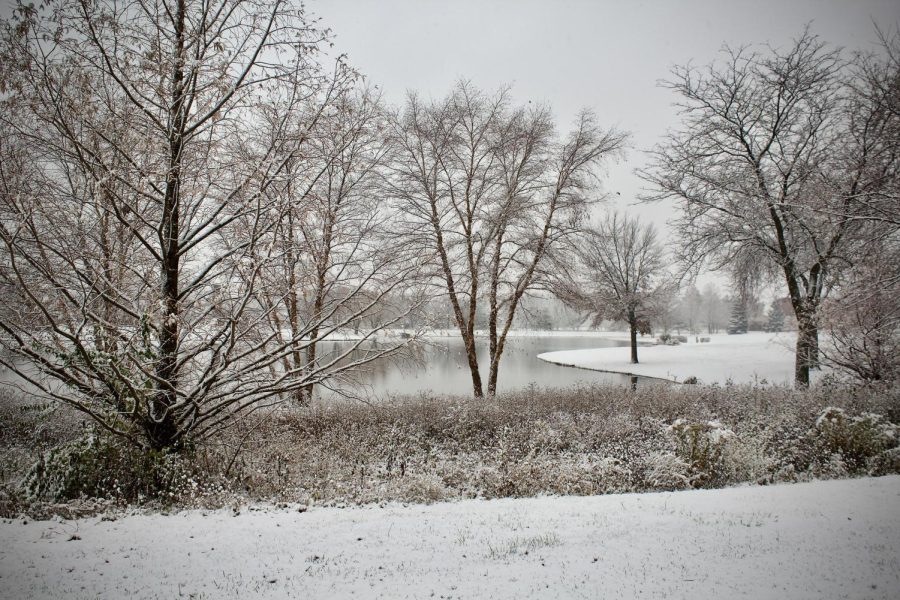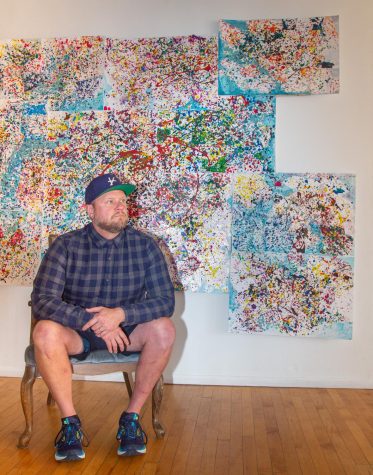Seasonal depression has arrived. Here is what you need to know.
SAD affects young adults more frequently, so it is important to use strategies to decrease symptoms.
Daylight hours are shrinking, and the months are getting colder which only means one thing: it’s time for Christmas! Just wait on the Mariah Carey music because not all students are celebrating the joy of Christmas. In fact, some are bracing for the downside of the holiday season: seasonal depression.
Seasonal depression, known as seasonal affective disorder (SAD), is a form of depression that is triggered by a change in seasons. The peak of this disorder occurs between late fall and early winter before ending in the spring or early summer.
While anyone can experience SAD, it tends to occur more in women than men, according to The National Institute of Mental Health. SAD tends to begin in young adulthood. Individuals with other diagnosed mental health disorders– such as ADD/ADHD or anxiety– are more likely to experience SAD.
Dr. Nahrain D. Tavolacci, often referred to as Dr. T, who is a psychiatrist, currently a practicing psychologist here in Illinois, and one of the CEO’s of Modern Me Technology, said that seasonal depression consists of feeling listless, sad, or down nearly every day, losing interest in activities you once enjoyed, having low energy, having problems with sleeping too much, experiencing carbohydrate cravings, overeating, having difficulty concentrating, feeling hopeless, worthless, and having thoughts of not wanting to live.
It might seem impossible to avoid having this disorder, but there are certain measures you can take to really enjoy the holiday without this looming over you. Here’s what you should do if you do feel the seasonal depression kicking in
Maintain a regular bedtime.
Lack of sleep worsens the symptoms of general depression which can lead to experiencing SAD. As a college student, I know it’s difficult to maintain a regular sleep schedule, since we are studying and working seemingly for all hours, but it is very important to receive at least 8 hours of sleep. Not only will late night increase depression, but the lack of energy and sleep can negatively impact academic success. Using eye masks and earplugs are good bedtime accessories to have. I personally listen to music when I go to sleep to ease my brain and wind down at the end of a stressful day.
Create balance and routine.
As college students, we are masters at time management, right? OK, maybe not. Prioritizing time management will lead to reduced stress. This, in term, will help improve mood, sleep, etc.
Prioritize emotional and physical well-being.
Many of us see winter as a time to shut out the cold and stay indoors. It might be tempting for college students to stay home all curled up by the heater, but hibernating indoors denies the body of serotonin, a brain chemical that affects mood. Low serotonin might trigger depression. So, it is important to leave your house. Staying indoors may causes students to forego exercise, avoid social connections, and limits their exposure to sunlight. To decrease SAD symptoms, you want to do the opposite: exercise more, socialize with people more, and get as such sunlight as possible.
Consider light therapy.
Light therapy is an important step for or managing SAD. It includes exposure to outdoor daylight or specific indoor artificial light sources. There are light boxes you can purchase. If you want more information on light therapy, a medical source, mayoclinic, offers more details about what you should do before considering light therapy, and the benefits for a person with SAD.
Visit on-campus healthcare facilities.
For persistent symptoms, it may be necessary to speak to a wellness professional. Don’t hesitate to schedule an appointment with one of ECC’s Wellness Professionals.
Hopefully, you can use these tips to your advantage and take on winter confidently knowing that you are prepared for whatever is thrown your way.

Hi! I'm Vansh, a second-year ECC dual credit student! I am majoring in Pharmacy, and I am currently the Podcast Director for the podcast, Eye of the Observer....








